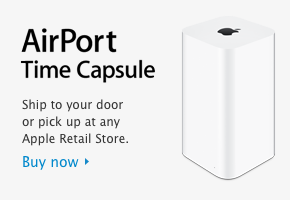 Plesk allows you to create custom buttons to the control panel, complete with logo and URL. Since Plesk 11.5 you can even choose in which part of the panel your buttons shall be displayed.
Plesk allows you to create custom buttons to the control panel, complete with logo and URL. Since Plesk 11.5 you can even choose in which part of the panel your buttons shall be displayed.
To do this, login as administrator and head over to
- Tools & Settings
- under Panel Appearance, choose Custom Buttons
- click Add Link to Service
- give your button a Display Title and enter a URL
- select an image (I find 100×100 works well)
- select where you’d like the button to appear from the drop-down

 I had an odd problem the other day: I wanted to restore a fairly large folder from my new AirPort TimeCapsule. But the restore always stopped at one particular file, with an error message about permission problems.
I had an odd problem the other day: I wanted to restore a fairly large folder from my new AirPort TimeCapsule. But the restore always stopped at one particular file, with an error message about permission problems. Every once in a while it can happen happen that use use “yum update” to update your Linux system.
Every once in a while it can happen happen that use use “yum update” to update your Linux system.